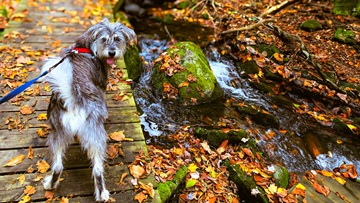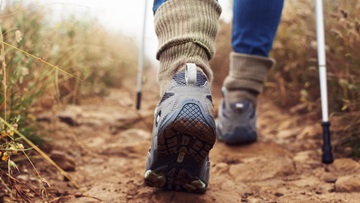The CFIA and its partners are on a mission to protect Canada's trees from the growing threat of invasive pests. Healthy trees are vital – not just for our environment, but for our communities, economy, and way of life. During tree check month this August, let's team up to defend our forests, safeguard our neighbourhoods, and keep our canopies thriving for generations to come.
Get involved in local events
National Capital Region: August 13, 2025
Date: August 13, 2025
Time: 11:00 am to 1:00 pm
Location: Ron Kolbus Lakeside Centre Trolley, Britannia Park
Details: Get hands-on tips from experts from the City of Ottawa and the CFIA for checking your trees and learn how to spot the early signs of trouble. It's a free, family-friendly way to get involved, connect with local experts, and play a part in protecting our city's leafy canopy for the future.
No need to worry about the weather – the event is covered and will run rain or shine.
Niagara Region: August 28, 2025
Date: August 28, 2025
Time: 11:00 am to 1:00 pm
Location: Glenridge Quarry Naturalization Site
Details: Get hands-on tips from experts from the Regional Municipality of Niagara and the CFIA for checking your trees and learn how to spot the early signs of trouble during our walk and learn. It's a free, family-friendly way to get involved, connect with local experts, and play a part in protecting our city's leafy canopy for the future.
No need to worry about the weather – the event is covered and will run rain or shine.
Is Your Tree in Danger? How to do a 2-minute tree check
Transcript - Is Your Tree in Danger? How to do a 2-minute tree check
Hey there! If you own or rent a property with trees, taking a few minutes to check on them every summer can make a big difference. Let's do a quick tree check together!
Start at the base, where the tree meets the ground—this area is called the root collar. Look for any damage, like cuts from lawnmowers. Exposed wood can let in pests and diseases.
Now, check around the roots for something called frass. It looks like sawdust, but it's actually waste from insects making holes in your tree. If you see this, it could mean trouble!
Next, scan the trunk. Are there cracks, peeling bark, or tiny holes? These can be signs of pests or disease. A healthy tree's bark should be firmly attached.
Time to look up at the canopy! It should be lush and full. Fresh, flexible growth is a great sign! But watch out for misshapen, hole-punched, or discoloured leaves. On evergreen trees such as spruces or pines, the needles should be green and bendy, and not dry, brittle or brown.
If something seems off, don't ignore it! Contact a local forest professional for advice. Familiarize yourself with regulated pests in your area. If you think your tree might be infested with a regulated pest like the emerald ash borer, hemlock woolly adelgid, or spongy moth and the tree is outside the regulated area, report it to us and we'll check it out!
A yearly tree check goes a long way in keeping your trees—and Canada's forests—healthy.
Happy tree check month!
Find out what pests are in your area
Pests in each region across Canada
Get familiar with the pests and diseases that are close to home, know what to look for! If you spot any signs of tree disease or invasive species, report them to the CFIA. Early detection and reporting are crucial in managing and controlling these pests.
Resources to grow your knowledge
Make it a family mission – we've got awesome activity guides for kids designed to empower the next generation of citizen scientists! These fun, easy-to-follow resources teach kids how to spot invasive species and plant diseases—and most importantly, how to report them to protect our environment.
Check out our print and social media products to help us spread awareness!
More information


